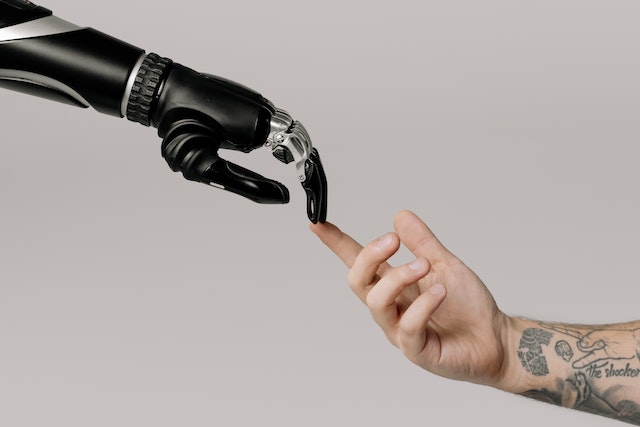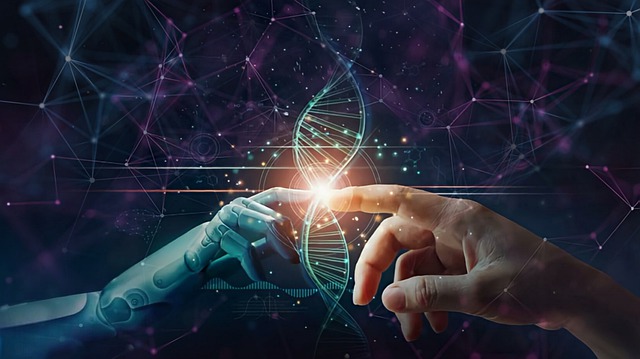What is AI and Why Should You Care? A Beginner’s Guide to Understanding the Rise of Machine Intelligence
Artificial intelligence, or AI, is a rapidly growing field that is changing the way we live and work. From self-driving cars to virtual assistants, it’s everywhere, but what is AI? How does it work? Where did it came from? In this beginner’s guide, we’ll explore the basics of AI and its impact on our world. We’ll also decode the jargon and buzzwords, so you can better understand the key concepts behind this exciting technology. Let’s dive in!
What is AI?
Essentially, AI involves machines and computers performing tasks that would normally require human intelligence to complete. This includes processes like learning, problem-solving, recognizing speech, language translation, making decisions, and even learning.

AI has come a long way since its inception and is shaping up to revolutionize many different industries, from healthcare to transportation. While it can be daunting to grapple with the concept of computers having the capability to do human-like tasks, it’s clear that AI has the potential to make our lives easier, more efficient, and more productive. AI is changing the game and I am all excited to see where it goes next.
What is the definition of AI?
Artificial intelligence (AI) is a field of computer science focused on developing machines and computer systems that can perform tasks that normally require human intelligence. AI involves creating algorithms, models, and software that enable computers to perceive, reason, learn, and interact with the world in ways that simulate human intelligence. Some examples of AI applications include natural language processing, computer vision, robotics, and machine learning. Overall, AI seeks to develop intelligent systems that can assist, augment, or replace human decision-making and problem-solving capabilities in various domains.
In short AI is like having a really smart robot friend that can help you with things. This robot friend can understand what you’re saying, help you solve problems, and learn new things like you do. AI is all about building these robot friends to make our lives easier and more fun.
How does AI work?
Artificial Intelligence (AI) has revolutionized modern technology, transforming the way we interact with our world. But how does it actually work? Through complex algorithms and sophisticated computer programs, AI systems are designed to analyze data, recognize patterns, and make predictions based on that information. This allows them to perform complex tasks such as natural language processing, image recognition, and autonomous decision-making. By continually learning and adapting to new information, AI has the potential to unlock unprecedented possibilities in many different fields ranging from healthcare to finance to transportation.
What are examples of AI technology and how is it used today?
From automating mundane tasks to predicting the future, AI is quickly becoming a force to be reckoned with in the world of technology. With the emergence of new technological advancements, AI is slowly becoming a staple in various industries. From healthcare to finance, and even entertainment, the use of Artificial intelligence is being integrated into our daily lives in a multitude of ways.
One of the primary applications of AI is in automating systems that require human intervention. AI is also used extensively in the field of robotics, where it can help perform various tasks and learn from its surroundings. For example, in healthcare, AI is used to analyze medical data and identify potential health risks, while in finance, AI is used to detect fraud and make investment decisions. In transportation, AI is used to improve traffic flow and reduce accidents. Another example is the use of virtual assistants such as Siri, Alexa, or Google Assistant, which are continuously learning and improving through machine learning algorithms.
These are just a few examples of how AI is changing the way we live and work. Other areas where AI is used include self-driving cars, recommendation systems used by e-commerce sites, and new and trendy chat bots. As technology continues to evolve, we’ll continue to see more innovative uses of AI that will undoubtedly change the way we live and work.
Different types of AI
Artificial intelligence (AI) is a broad field with a diverse range of applications, and as such, there are many different types of AI. However, these can generally be categorized into two main types: general AI and narrow AI. Despite the wide range of AI types, they can all be broadly classified under these two categories.
Understanding the different types of AI is essential as we increasingly rely on them in our daily lives.
Narrow vs. general AI
Artificial intelligence can be categorized into two main types: narrow AI and general AI. Narrow AI is designed to perform a specific task, such as facial recognition or language translation. On the other hand, general AI is designed to be more versatile and can perform a wider range of tasks. However, the development of general AI brings up ethical concerns about the role of AI in society and the potential loss of jobs as more positions become automated. The debate between narrow and general AI continues to drive research and development in the industry, ultimately pushing the boundaries of what is possible with artificial intelligence.
In the following paragraphs, we will explore some of the main types of AI and their applications.
Exploring the Different Types of AI

Now that we’ve covered the basics of narrow and general AI, let’s dive deeper into some of the specific types of AI and their applications. In this section, we will explore four common types of AI: rule-based systems, neural networks, machine learning and natural language processing. Each of these types of AI has its unique strengths and use cases, and understanding them can help us better appreciate the ways in which AI is changing our world.
Rule-based systems
Rule-based systems are a type of AI that use a set of rules to make decisions or take actions. These rules are typically based on a set of logical statements, and they can be used to model a wide range of decision-making processes. For example, a rule-based system might be used to diagnose a medical condition based on a set of symptoms. The rules in the system would be based on the knowledge and expertise of medical professionals, and the system would use these rules to make a diagnosis based on the patient’s symptoms.
Machine learning
Machine learning is a type of AI that allows machines to learn from data without being explicitly programmed. There are many different types of machine learning, but the basic idea is to train a machine learning model on a set of data, and then use that model to make predictions or take actions on new data. Machine learning has diverse applications, from recognizing images and natural language processing, to predicting outcomes and detecting fraud.
Neural networks
Neural networks are a specific type of machine learning that are modeled after the structure of the human brain. They are made up of layers of interconnected nodes, and each node performs a simple calculation based on the inputs it receives. The output of each node is then passed on to the next layer, where it is used as input for the next set of calculations. Neural networks are particularly well-suited to tasks such as image and speech recognition, where the input data is complex and difficult to model using traditional rule-based systems.
Natural language processing
Natural language processing is a type of AI that allows machines to understand and generate human language. It is used in a wide range of applications, from chatbots to language translation. Natural language processing involves teaching machines to recognize the structure and meaning of human language, and to use that understanding to perform tasks such as answering questions or generating responses to text.
Benefits and Challenges of AI
Artificial intelligence (AI) has revolutionized the way we live, work, and interact with technology. It has the potential to transform industries and improve our lives in countless ways. However, with great power comes great responsibility, and the development and use of AI also bring challenges and risks. Further, I will explore the benefits of using AI and challenges that we might face, discussing how it can improve our lives while also considering the potential ethical, social, and economic implications.
Examining the Benefits of AI
As technology advances at breakneck speed, AI’s presence in our daily lives is becoming more and more noticeable. From virtual assistants like Siri and Alexa to self-driving cars and facial recognition software, AI is here to stay. But what are the benefits of AI, and how do they affect us?
AI has numerous benefits across various industries and aspects of life. These include automating repetitive tasks, enhancing decision-making, improving efficiency, detecting and diagnosing medical issues, reducing errors, increasing accuracy and precision, providing personalized experiences, enhancing cybersecurity, and aiding in scientific research. With its ability to replicate human-like thinking, AI is transforming the way we interact with technology and is expected to bring about significant advancements in fields such as healthcare, finance, and transportation.
While there are certainly concerns about AI’s impact on the workforce and privacy, it’s hard to deny that the benefits are impressive. AI is shaping up to be one of the most transformative technologies of our time.
Discussing the Challenges and Potential Risks of AI
While AI has the potential to revolutionize many industries and improve our daily lives, there are also several challenges and potential risks that come with its use. One of the most pressing concerns is the potential loss of jobs as more tasks become automated. Another challenge is the ethical implications of AI, particularly in areas such as privacy and bias. For example, facial recognition software has been shown to have a higher error rate for people with darker skin tones, raising questions about its fairness and accuracy.
Moreover, many creative artists are concerned about their work being used without proper protection against unauthorized copying and distribution. Additionally, there are concerns about the use of AI in autonomous weapons and its potential to be used for malicious purposes. There is also the risk of malicious actors using AI for nefarious purposes, such as creating deepfake videos or perpetrating cyber attacks.
As AI continues to advance, it has become clear that there are challenges and potential risks to consider. It is important to address these challenges and mitigate potential risks to ensure that AI is used in a way that benefits society as a whole rather than creating further divides.
The ethical considerations surrounding AI
Artificial intelligence, the once fictional concept now a reality, leaves many unanswered ethical questions. The thought of computers making decisions on their own can be both exciting and scary. On one hand, AI can be utilized to automate tasks and make our lives easier, but on the other, it can be used to hack personal information, manipulate society, and even endanger human lives. It is hard, if not impossible, to control the decisions made by AI, which begs the question – who is responsible for the actions performed by artificial intelligence?
These are the ethical considerations surrounding AI that demand our attention. As we continue to develop various applications of AI, we must remember that the decisions made now can shape the future of our society. The ethical repercussions of our actions must be considered in every step we take towards AI progress.
Future of AI and its impact on society.
The future of AI is exciting and full of potential, but it also raises important questions about its impact on society. As AI becomes more advanced and integrated into our daily lives, it has the potential to revolutionize industries, improve healthcare, and solve complex problems. However, it also raises concerns about job displacement, economic inequality, and the potential for AI to be used for harmful purposes. It’s important for society to carefully consider the ethical implications of AI and work towards creating a future where AI is used for the greater good.

Welcome to the brave new world of Artificial Intelligence! AI is quickly becoming an integral part of our society, and the implications are far reaching. Whether you’re a beginner with no knowledge about AI or an experienced techie who wants to know more, this blog post will give you all the information you need on what AI really is. We’ll go into some detail about why it’s so useful and revolutionary, while maintaining a friendly but informative tone throughout. So sit back, relax, and let us take you through one incredible adventure as we explore the power of Artificial Intelligence!
The potential impact of AI on our lives
Picture this: you’re sitting in your self-driving car, sipping on some coffee, and casually scrolling through your social media feed as your car navigates through traffic. No, this isn’t some far-off futuristic scenario – it’s the potential reality we face with the rise of Artificial Intelligence (AI). While the idea of AI may conjure up images of robots taking over the world, the reality is much less dramatic (for now). What AI truly has the potential to do is revolutionize the way we live our lives. From healthcare to transportation to even education, AI has the power to make our daily routines easier, safer, and more efficient. So while we may not be living in a sci-fi movie just yet, the possibilities with AI are certainly exciting to think about.
Can AI replace human intelligence?
As technology continues to advance, the question of whether artificial intelligence (AI) can replace human intelligence is a topic of debate among experts. While AI can perform certain tasks with great efficiency, it still lacks the ability to fully replicate human intelligence and creativity, and it doesn’t have the same emotional and cultural awareness that comes naturally to humans. Therefore, it is more likely that humans and AI will continue to coexist and complement each other’s strengths rather than AI completely replacing humans in the future.
How businesses are using AI for competitive advantage
Artificial intelligence (AI) is quickly becoming the secret weapon for many businesses. Gone are the days of crunching numbers manually or getting bogged down by repetitive tasks. With AI, companies can now analyze data faster, predict trends more accurately, and even automate processes. It’s like having a personal assistant who never sleeps and works at lightning speed. But AI isn’t just a luxury anymore – it’s a necessity for businesses who want to maintain a competitive edge. In fact, those who are slow to adapt risk being left behind in the race to the top. So, if you’re not already on board with the AI revolution, it’s time to hop on and see what it can do for your business. Who knows? Maybe your competitors are already using it and have a leg up. Don’t let them outsmart you – give AI a chance to work its magic.
A look at current trends in the development of AI
Are the robots finally taking over? Not quite yet, but the development of AI is definitely at an all-time high. From self-driving cars to virtual assistants, the possibilities seem endless. One current trend in AI development is the use of machine learning, allowing machines to learn from data and improve their performance over time. Another trend is the integration of AI into various industries, such as healthcare and finance, to improve efficiency and accuracy. As more advances are made in this field in the coming years, we could unlock further beneficial applications for AI that will have far-reaching implications not just socially but economically too.
While these advancements are exciting, some caution is necessary to ensure that AI is developed ethically and for the benefit of all. So, while we may not need to fear our robot overlords just yet, we can certainly look forward to the exciting possibilities that AI has in store.
Conclusion
To sum it up, artificial intelligence is no longer just a concept of the future. It’s all around us, from voice assistants on our phones to self-driving cars on our roads. In this beginner’s guide, I’ve covered what AI is, how it works, the different types of AI, and the benefits and challenges associated with this emerging technology, to provide a good starting point for understanding some of the most common and widely used techniques in AI. AI is an exciting and promising technology that has the potential to bring about significant benefits in areas such as healthcare, transportation, and education.

However, with great power comes great responsibility, and it’s crucial that we address the challenges and ethical concerns associated with AI. Whether we like it or not, AI is here to stay, and understanding its workings and potential impact is essential for staying ahead of the curve. As the field of AI continues to grow, we can expect to see new types of AI emerge and new applications for AI to be developed. So, let’s embrace the rise of machine intelligence and prepare ourselves for a future where AI plays a critical role in shaping our world.







